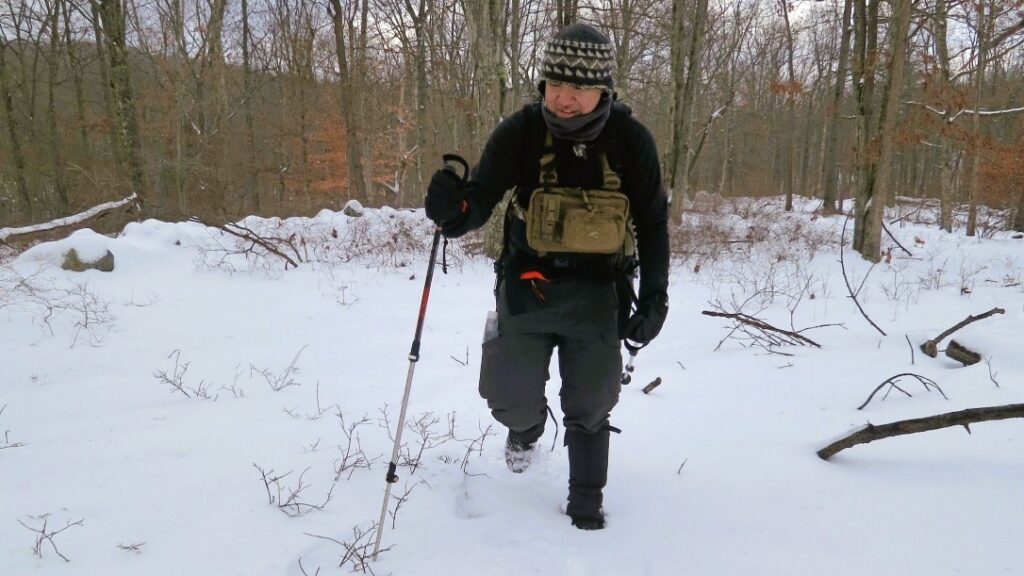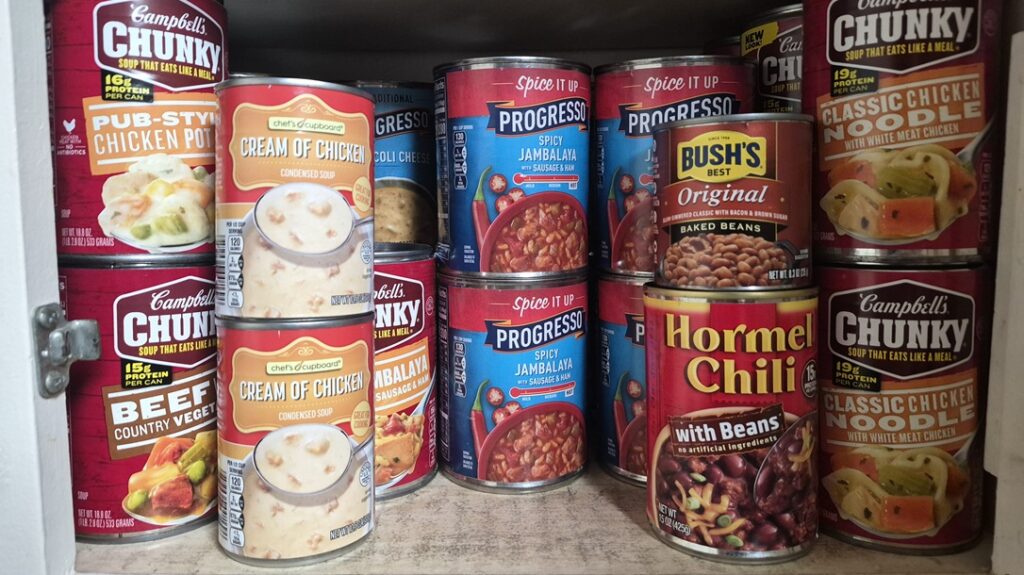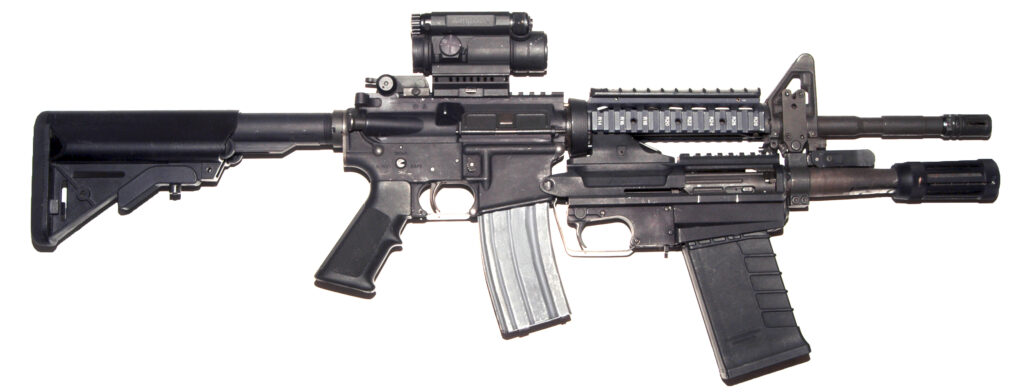So there I was, a few brewskis deep, watching Timecop. If you’ve never seen Timecop, you’re missing out. It’s a 1994 film that takes place in 2004, and we’ve invented time travel. It’s ’90s B-movie fun with Jean-Claude Van Damme. The film’s primary hero gun is a PT99 with a futuristic shell, but it was an 870 that gathered my attention. The gun featured an odd grip from Butler Creek.
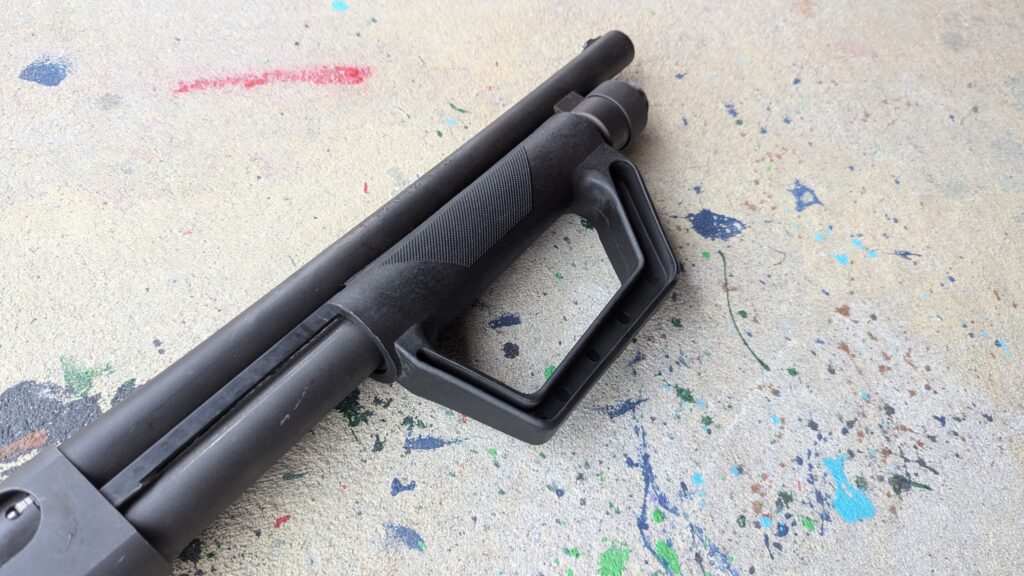
It took a few Google searches to figure it out, but the weird-looking, D-shaped grip caught my attention. I wanted one, but they’d been long out of production. Luckily, I found one on eBay, and after a little boozy shopping, had one headed my way. Call me curious. What I didn’t expect was to absolutely adore the design and come to the conclusion that it needs to make a comeback.
Advertisement — Continue Reading Below
The Butler Creek Tactical Forend
I know Butler Creek for making scope caps and not much else. The fact that they made such an odd shotgun forend was news to me. The forend seems to have only been made for 870s and Mossberg 500s. It offers a fairly small section to grip, but that section is surrounded by a pseudo D-shaped polymer cage.
The idea seems simple. It would keep your hand from slipping off the rear or the front of the forend. When you work a pump shotgun fast, it’s possible for this to happen, but it seems to be fairly rare. I’ve only had it occur a handful of times with those silly Turkish shotguns with spring-loaded pumps. This isn’t a unique idea. Remington and Mossberg have attached straps to their shotguns for the same purpose.
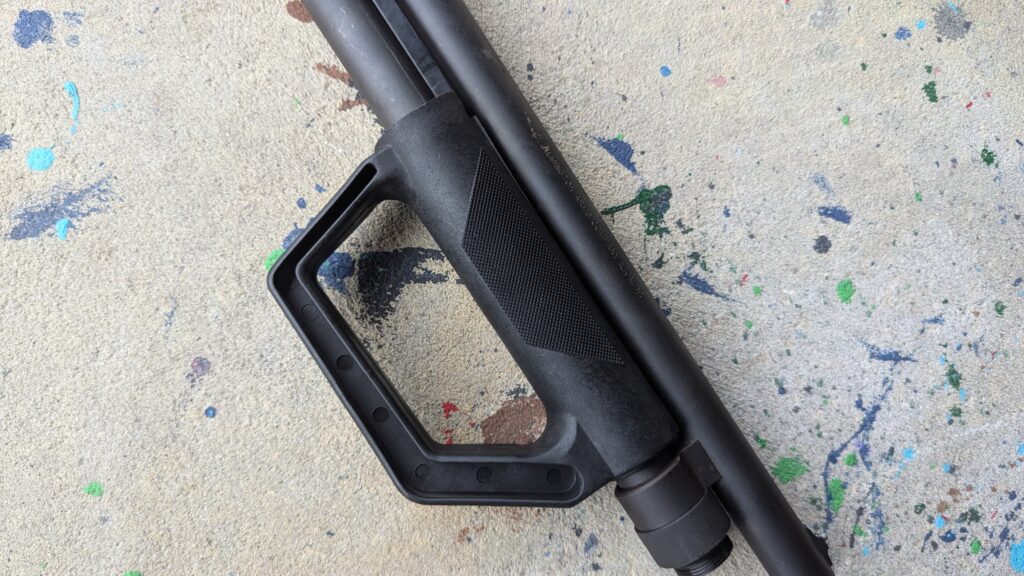
Advertisement — Continue Reading Below
My hand slipping off an 870 isn’t a big concern, but I can trace the logic. The D-shaped Butler Creek forend adds some bulk to the gun and could double as the most irresponsible carry handle. I received mine quickly and had to pick and choose which 870 to toss it on. I settled for a TAC-14.
The forend fit tight—way tighter than the Magpul forend I removed—but hey, tight isn’t bad. I locked it down and immediately liked the look and feel of the Butler Creek tactical forend. It certainly made the TAC-14 a more striking gun. Immediately, I saw the benefit as I dry-fired the TAC-14 with the forend equipped.
Why The Butler Creek Tactical Forend Needs to Come Back
I don’t necessarily need the extra retention the Butler Creek forend offers. My hand doesn’t come off an 870 grip. What it does is give me something to press against when I use a push/pull shooting style. The push/pull shooting technique means I push forward on the pump and pull rearward on the grip.
Advertisement — Continue Reading Below
This creates tension and reduces shotgun recoil. Shotguns, especially twelve-gauge guns, tend to have heavy recoil. Proper mitigation techniques are a must-have for effectively shooting a shotgun. The technique is even more critical on a stockless gun, like the TAC-14. When I’m push/pulling, I can put my hand against the front of the D-shaped cage and press even harder.
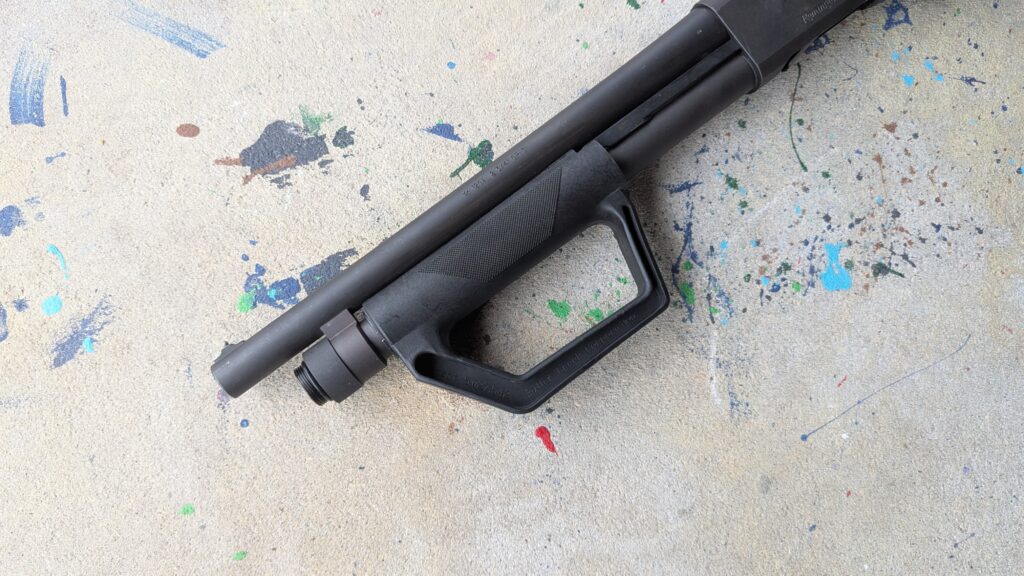
I’ve used the same technique while shooting with a Surefire DSF 870. Admittedly, it’s easier for your hand to slip while using the push/pull. However, it’s not something I’ve experienced, but there is some value to having something to press against.
Advertisement — Continue Reading Below
When using push/pull, it becomes a bit like a dance. You press and pull hard, creating good, recoil-defeating tension, and fire your shot. You then have to drop the tension to run the pump and then reassume the tension. It takes a little rhythm to get fast with it. The rear portion of the cage ensures that when you relax, your hand doesn’t slip off the grip.
To The Range
I loaded my TAC-14 up with some cheap buckshot and hit the range to test my theory. With the Butler Creek forend in place, I shot a few simple ready-up drills, assuming rapid push/pull and pressing against the front of the D-ring-shaped design. I pressed hard and saw an instant reduction in recoil. The gun barely moved between shots.
I fired double-taps and three-shot drills. I could keep the bead inside of an A-zone at 10 yards. It was easy to fire multiple shots rapidly and maintain that good push/pull. I could put two rounds on target in less than a second. It surprised the hell out of me how well it worked.
Advertisement — Continue Reading Below
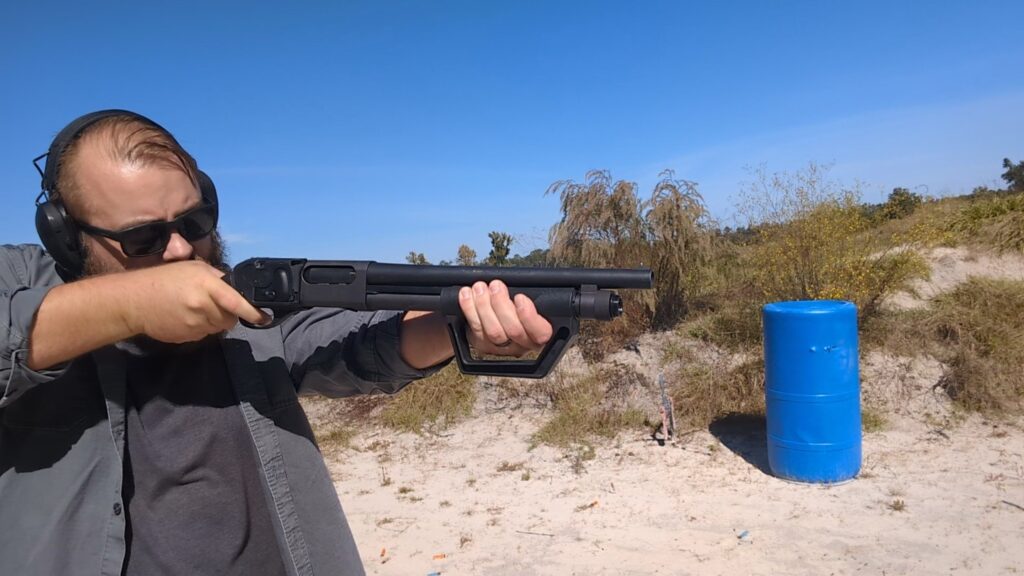
It’s such a simple addition to the gun that gives you an additional crutch when trying to control a shotgun, especially a pistol-grip-only shotgun or, in this case, other firearms. The Butler Creek forend proved to be an incredibly effective design, even if that wasn’t the original intent.
The downside is that the polymer impacts your hand a fair bit. Your pointer finger absorbs some of the blow. Luckily, the D-shaped design is wider in this area and disperses recoil decently. For a few shots, it’s not a problem, but for a long day of training, it’d get tiresome.
Advertisement — Continue Reading Below

I think adding a little cushion, like maybe cutting up a shoe insole and taping it to the front of the D-ring, would work.
Innovation in the Past
The Butler Creek tactical forend is no longer produced, but it should be. It’s patented, and that might be a hassle depending on the patent’s age, but it’s a simple solution to making your gun more controllable. I’d love to see this forend make a comeback, and I think there is some value in the design.
Advertisement — Continue Reading Below

